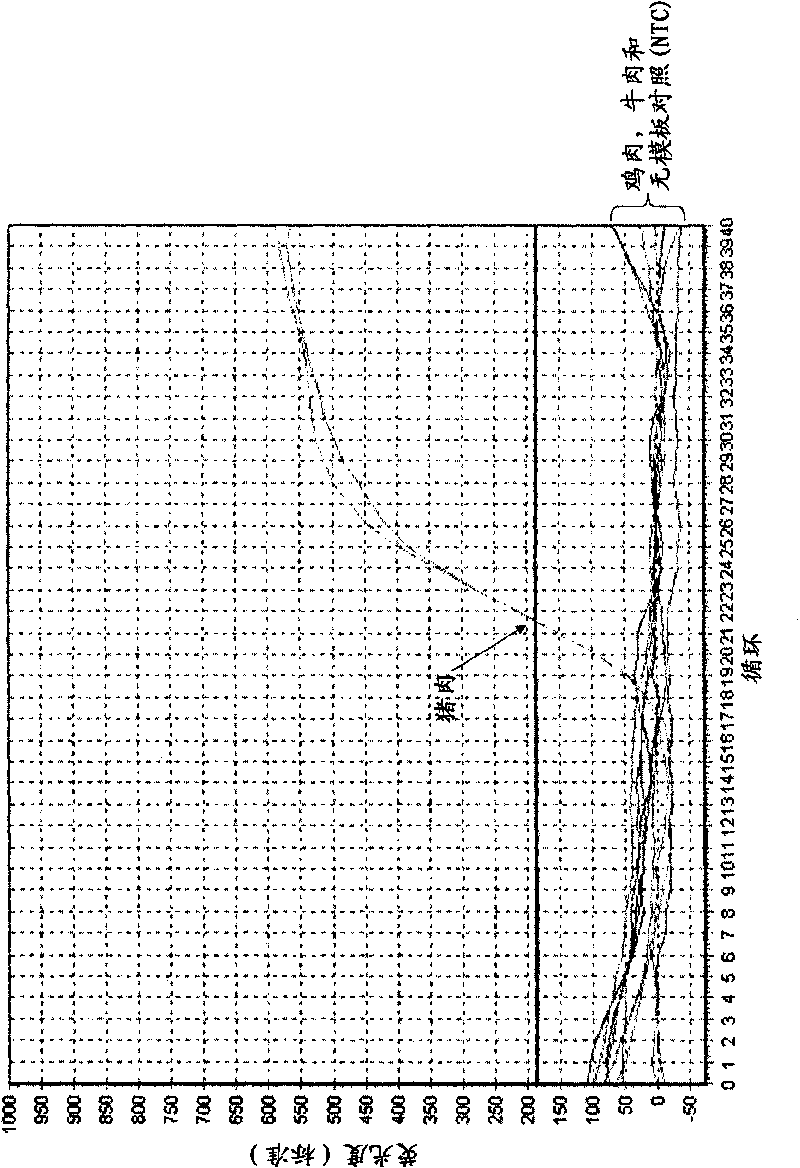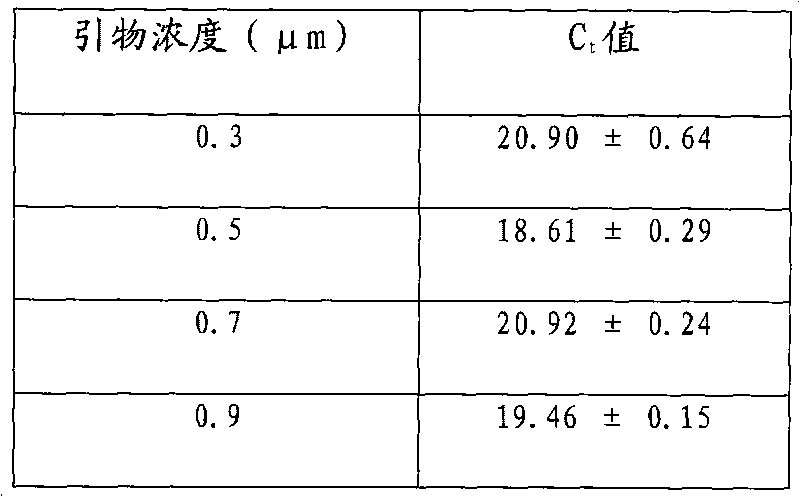A method for identifying a pork content in a food
A pork and food technology, applied in the field of identification of pork components in food, can solve problems such as prolonging analysis time and laboratory pollution
- Summary
- Abstract
- Description
- Claims
- Application Information
AI Technical Summary
Problems solved by technology
Method used
Image
Examples
Embodiment Construction
[0023] The present invention describes the development and application of a pork-specific real-time PCR test for halal food identification. The primers were constructed to amplify an 89bp amplicon (89bpamplicon) of the pork mitochondrial gene ND5, which was mismatched with commercial chicken and beef. The test is highly sensitive, detecting the presence of 0.001 ng of pork template DNA when assessed at DNA dilutions in water. The primers developed for the identification of halal food are based on the pork mitochondrial gene ND5, and the primer sequences are as follows:
[0024] Forward primer (SUS-FWD: 5'-AGC TGC ACT ACA AGC AAT CC-3')
[0025] Reverse primer (SUS-RVS: 5'-ATG CGT TTG AGT GGG TTA GG-3')
PUM
 Login to View More
Login to View More Abstract
Description
Claims
Application Information
 Login to View More
Login to View More - R&D
- Intellectual Property
- Life Sciences
- Materials
- Tech Scout
- Unparalleled Data Quality
- Higher Quality Content
- 60% Fewer Hallucinations
Browse by: Latest US Patents, China's latest patents, Technical Efficacy Thesaurus, Application Domain, Technology Topic, Popular Technical Reports.
© 2025 PatSnap. All rights reserved.Legal|Privacy policy|Modern Slavery Act Transparency Statement|Sitemap|About US| Contact US: help@patsnap.com



